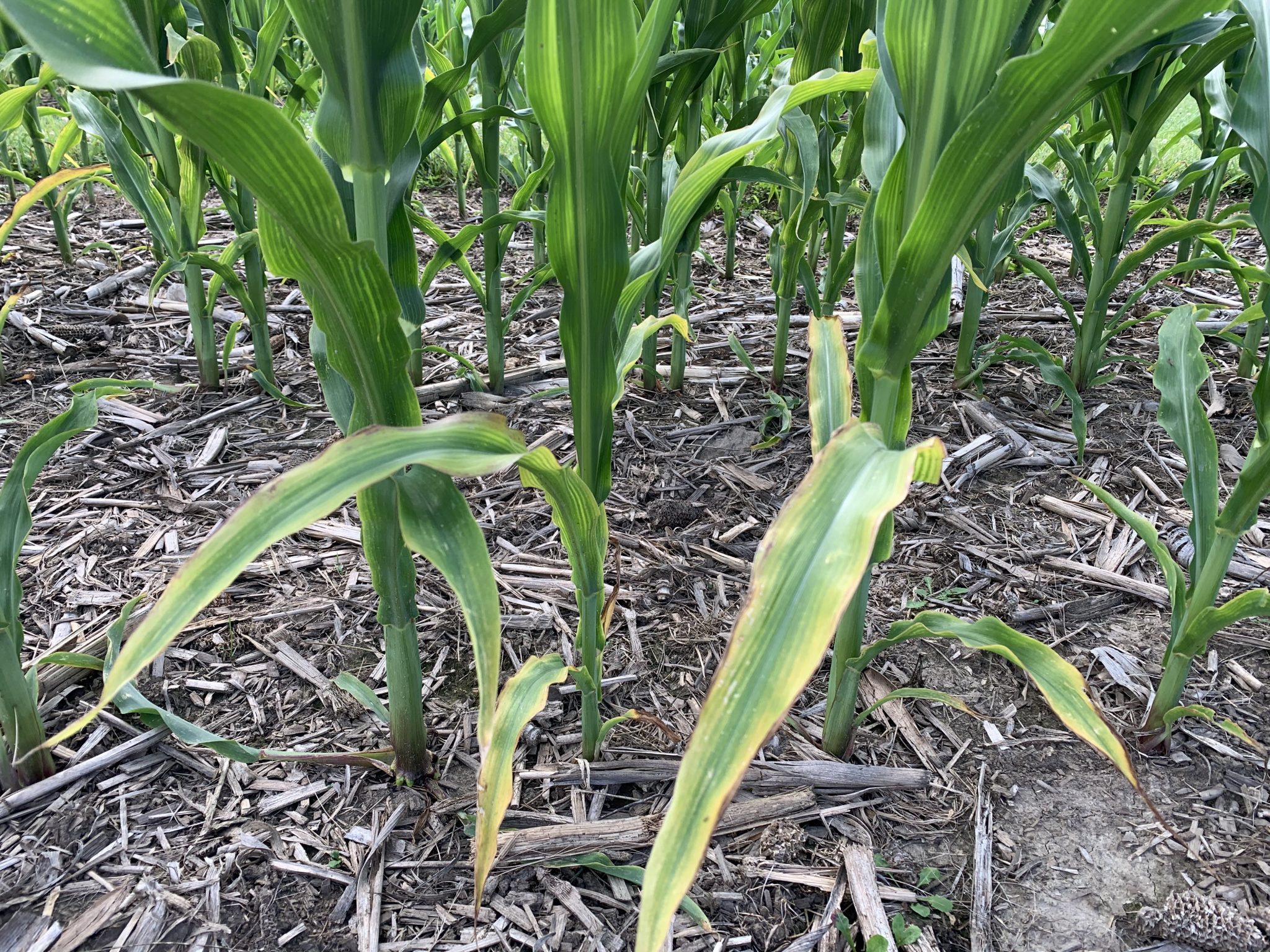Low soil moisture and compaction slow crop uptake of potassium (K), often resulting in K deficiency. Potassium deficiency will be worse under these conditions at marginal to sub-optimal soil test K levels. Symptoms are yellowing and browning along the edges of older plant tissues during vegetative growth in corn and soybean. After flowering, symptoms may appear on upper leaves of soybean. Tissue sampling and analysis can be used to confirm K deficiency, with levels below 1.75-2.0% K likely deficient. Although, the recent rains will enable greater K uptake, symptoms that are present now will not disappear. Foliar K applications can be effective at increasing yield with severe deficiency, but are generally expensive and have risk of tissue burn. Areas showing deficiency should be soil sampled to determine if low soil test and/or compaction were responsible for inadequate K uptake. Soil test levels less than 100-125 parts per million or 200-250 pounds per acre are considered marginal to sub-optimal for most soils. Fertilizer applications and/or tillage should alleviate or at least lessen the potential for K deficiency next season.




